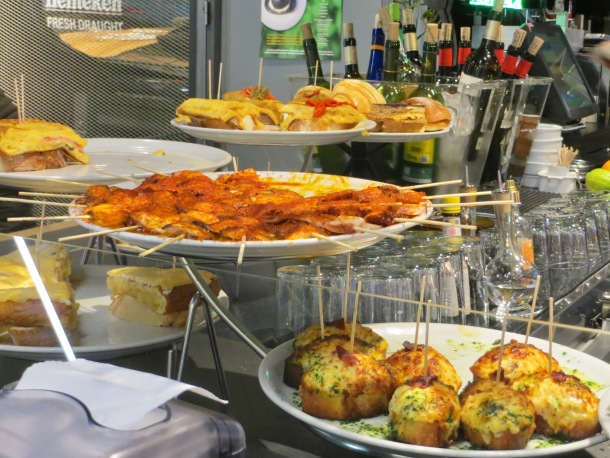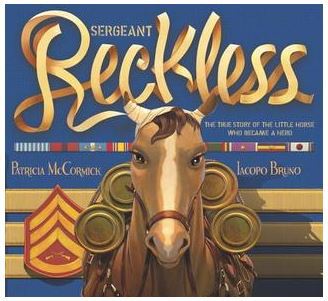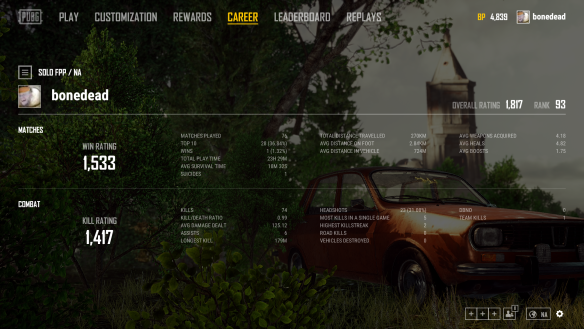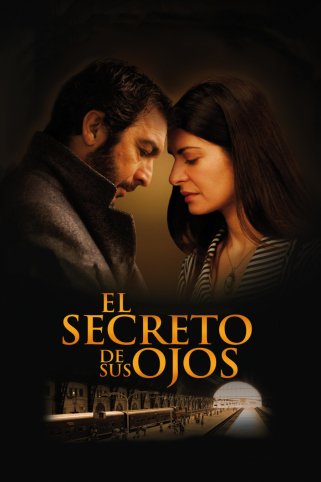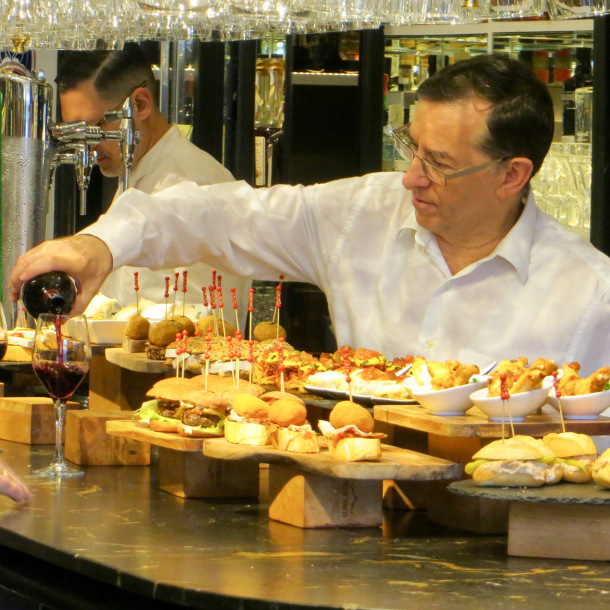
One of Spain’s culinary gifts to the world is tapas, and no trip would be complete without a night out wandering from bar to bar sampling these tasty tidbits.
But if your travel takes you to the northeast coast you won’t find tapas. What you’ll find instead are the Basque version of tapas which are called pintxos (peen-chos).
Basques are an independent lot, and as you might expect, pintxos are similar to tapas, but slightly different. Like tapas, pintxos can be meat, fish, or fowl combined with veggies, peppers, cheese, eggs, and whatever else the chef can imagine. But the major difference up Bilbao way is that the ingredients are stacked up and skewered to a piece of crusty bread. Socializing barhoppers love this tidy, one-handed, 2-3 bite package; the very definition of convenience and taste.
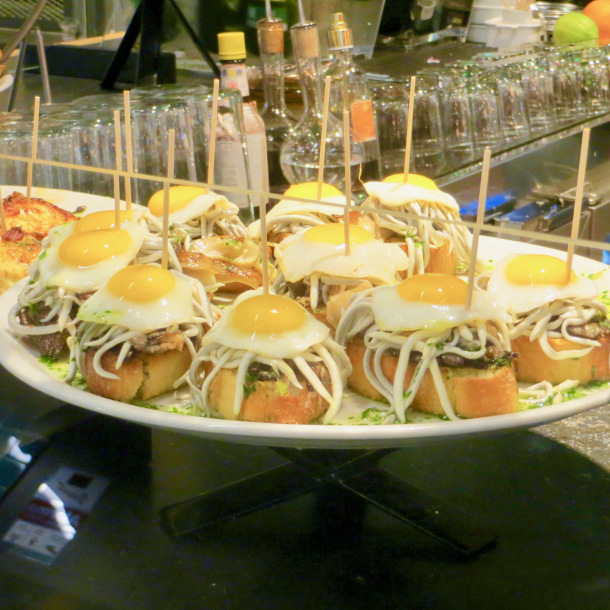
Do pinxtos sound like little more than mini-sandwiches? Think again. Most of the gourmet combinations we tried were mini-feasts. We still dream of the Iberico ham, poached egg, peach preserves, sesame seeds, walnuts and raisins on a slice of roasted baguette … true bliss.
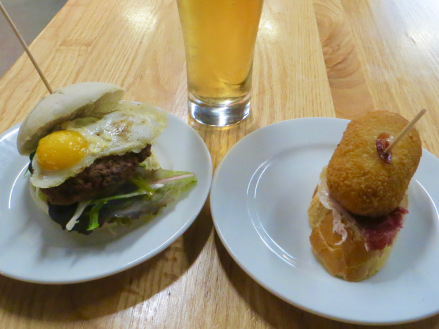
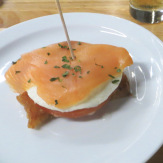
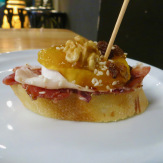
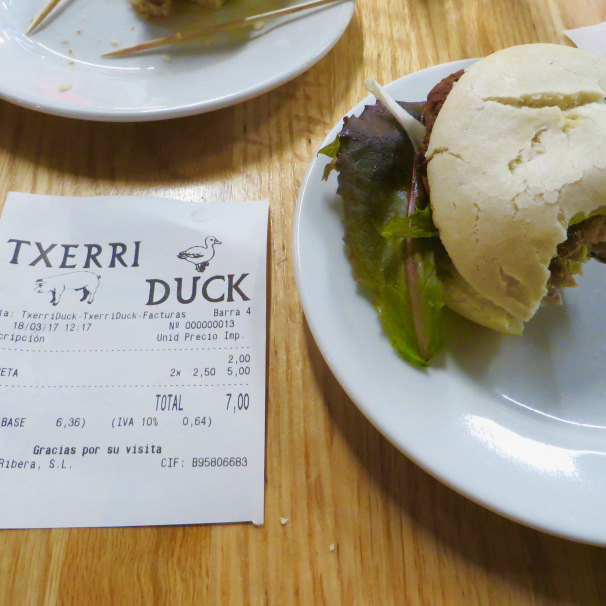
Meeting for Pinxtos is a time-honored part of the culture in this part of Spain. And just as important as the food and drink is socializing. Viewed through tourist eyes, a crowed bar scene looks like a cozy, warm, relaxed gathering of family and friends. But of course, there’s a protocol.
As always, we do our best to fit in, and our usual approach is to just do what the locals do. But still, there were a few of the finer points we didn’t understand. So to avoid looking like total Neanderthals, we sought professional help from the pinxtos experts in northern Spain. Their website is a foodie compendium that provided all the details we needed to understand the pinxtos culture: what to do, and just as important, what not to do in a pinxtos bar.
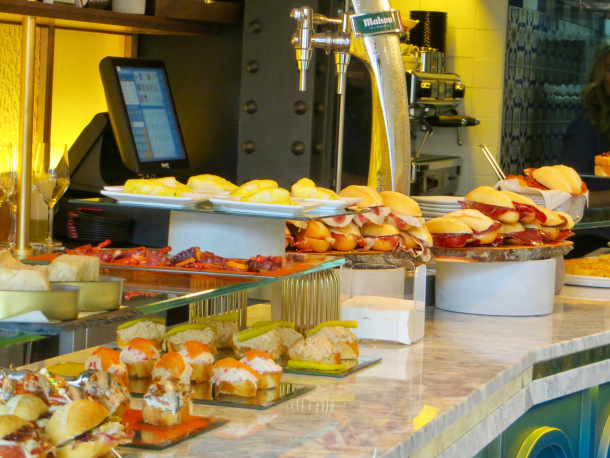
We did our “pintxos crawl” at Bilboa’s famous Plaza Nueva, which, in addition to being a beautiful historic square on the tourist track, was also lined with 15-20 pinxtos bars.
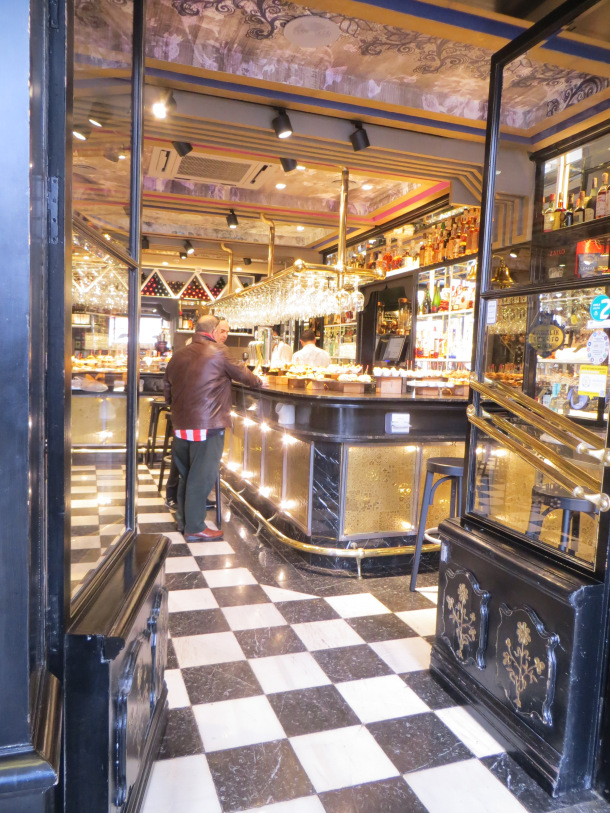
Most of the bars on the plaza are moderately priced, but there were a few high-end places like the attractive and famous Restaurante Victor Montes, which happens to be the expense-account eatery where the agreement to build Bilbao’s Guggenheim Museum was signed .
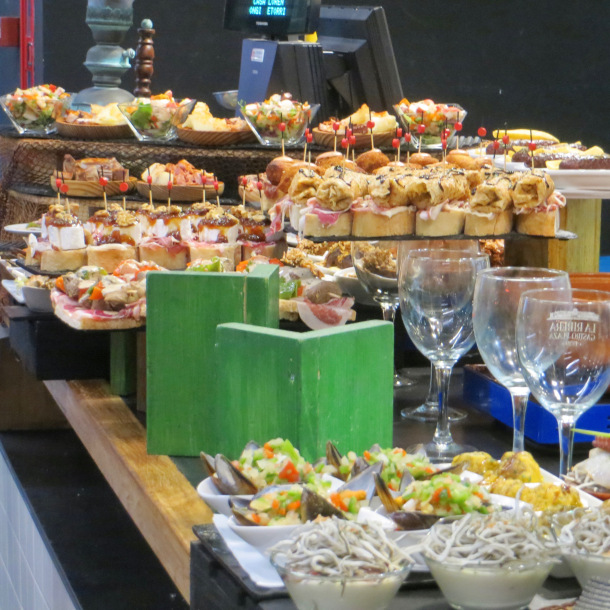
Another fun and interesting place to sample pinxtos is the La Riberia Market. This historic market dates back to the 14th Century and on weekends it hums with locals buying fresh meats, cheeses, fish and vegetables. The food hall on the opposite end of the building is lined with stall after stall selling all types of local delicacies. And for folks that don’t want to stand, it has the added benefit of tables and communal benches for sitting. So the trick is to wander the stalls, peruse the food options, snag a table, sample a few treats, and return again and again.
It’s no surprise that the pinxtos tradition is so popular. They’re a great way to sample regional specialities for a few Euros, and enjoy the company of people special to you. The barhoppers probably don’t realize it, but sociologists would say its the age-old human story of bonding over food. There’s no doubt that these Bilbaínos have the right idea.
Happy Trails,
James & Terri
